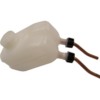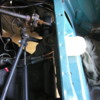My starting point is this article
https://www.speedsterowners.com...ks-locking-up?page=1
I have the symptoms noted in the article which is basically the rear brakes do not seem to be in balance / bite with the front disc brakes that lock up before the rear can share the load.
The diagnosis / solution was to start by changing the wheel rear wheel cylinders. I am assuming no kinks in the line. My car is based on a 63 pan. There appears to be to potentially two rear wheel cylinders that may apply (or not). Picture attached option one 1958-1964 style or 1965-1965. The latter seems a little more beefy. I am under the impression and the cost reflects $75 vs Brasil $18 that these are both German made so I hope good quality. My question is are they interchangeable i.e. is there an advantage to go for one over the other or is it a question of simply matching what I have. Is it a question of line diameter.
Any advice greatly appreciated.
Bill









